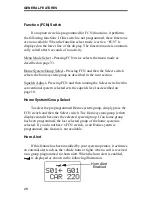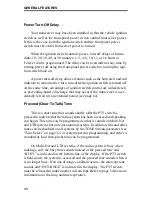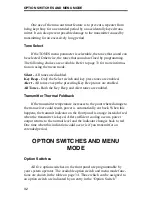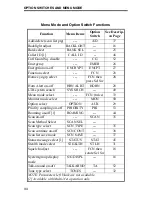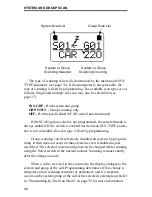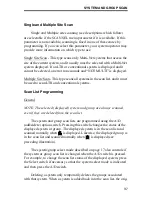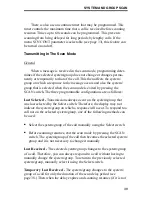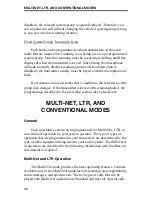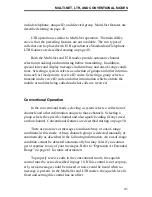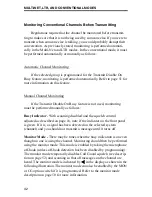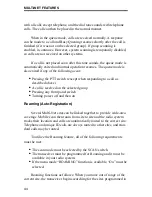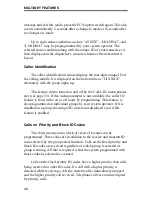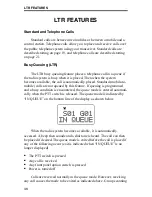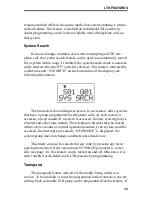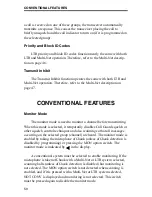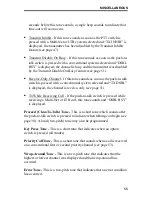
MULTI-NET, LTR, AND CONVENTIONAL MODES
41
include telephone, unique ID, and directed group. Multi-Net features are
described starting on page 43.
LTR operation is similar to Multi-Net operation. The main differ-
ence is that the preceding features are not available. The two types of
calls that can be placed with LTR operation are Standard and Telephone.
LTR features are described starting on page 48.
Both the Multi-Net and LTR modes provide automatic channel
selection (trunking) and monitoring before transmitting. In addition,
special tones and display messages indicate busy and out-of-range condi-
tions. Selecting a system selects a collection of groups and other informa-
tion such as fixed priority receive ID codes. Selecting a group selects a
transmit and receive ID code and other information which controls the
mobile or mobiles being called and what calls are received.
Conventional Operation
In the conventional mode, selecting a system selects a collection of
channels and other information unique to those channels. Selecting a
group selects the specific channel and also squelch coding (if any) used
on that channel. Conventional features are described starting on page 50.
There are no tones or messages to indicate busy or out-of-range
conditions in this mode. A busy channel (group) is detected manually or
automatically as described in the following information. An out-of-range
condition cannot be detected automatically but may exist if you cannot
get a response to any of your messages. Refer to “Operation At Extended
Range” on page 61 for more information.
To properly receive calls in the conventional mode, the squelch
control must be set as described in page 18. If this control is not set prop-
erly, weak messages could be missed or noise could be heard when no
message is present. In the Multi-Net and LTR modes, the squelch level is
fixed and setting this control has no affect.


